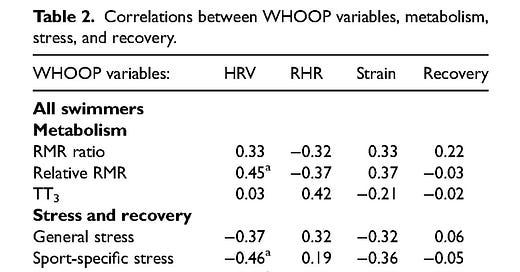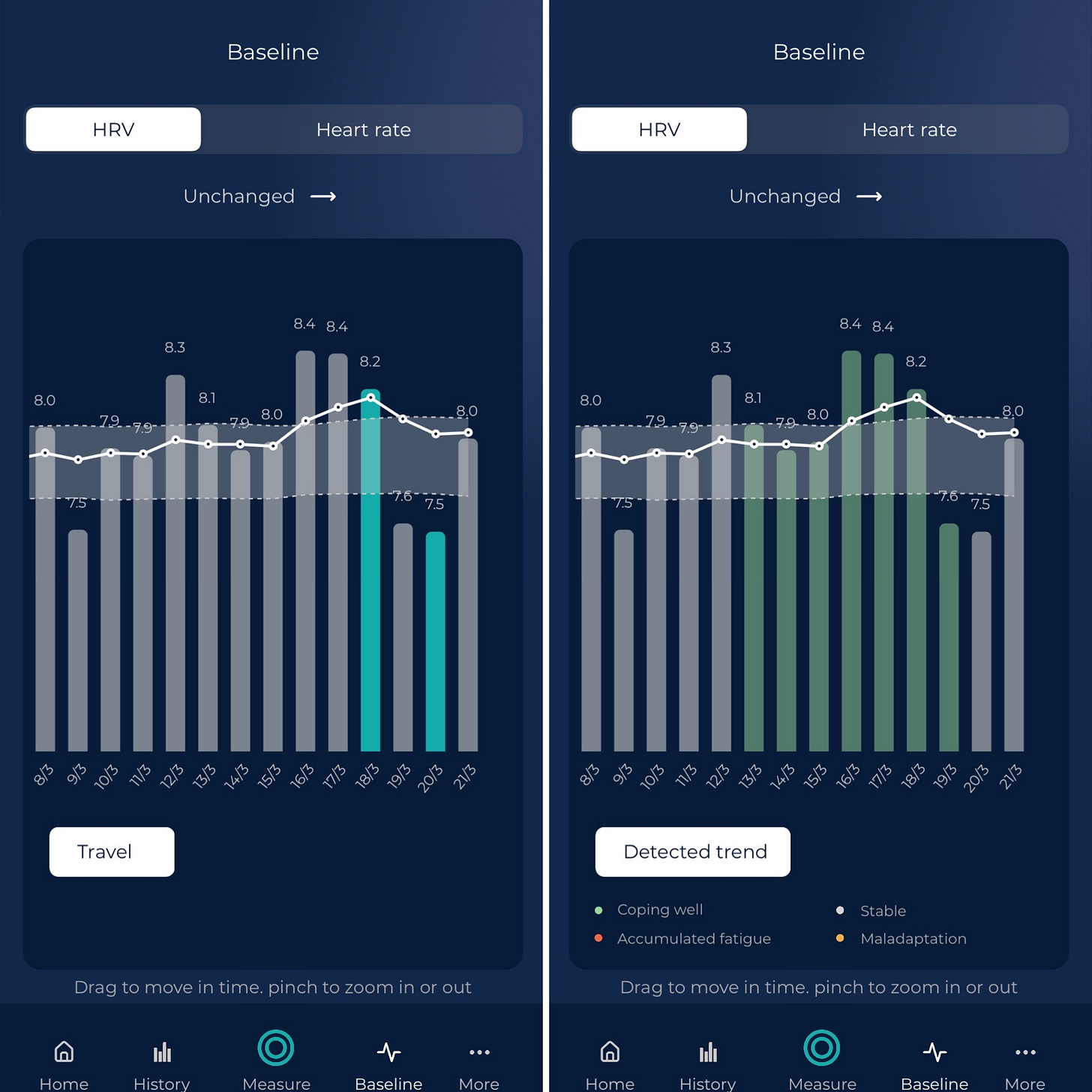hi there 👋
I hope everything is well.
Wearables these days provide lots of metrics. As a result, it is often confusing for users to determine which ones to pay attention to, and which ones are probably not worth our time.
In a previous newsletter and blog, I covered the main differences between actual physiological measurements (e.g. your resting heart rate and resting HRV), and made-up scores (e.g. readiness or recovery scores).
But what does the research say?
In a recent study brought to my attention by Sian Allen on twitter, researchers looked at self-reported stress measures (collected via a validated questionnaire), in relation to physiological measurements (e.g. resting heart rate and HRV) and made-up scores (the recovery score provided by a wearable).
As expected, we had a negative correlation between self-reported stress measures and HRV, i.e. the higher the stress, the lower the HRV. Similarly, we had a positive correlation between resting heart rate and HRV, hence the higher the stress, the higher the resting heart rate. The relationship between HRV and stress was also somewhat stronger than the relationship between heart rate and stress, highlighting once again how HRV is probably a more sensitive marker of stress. So far so good.
How about the recovery score? There was zero correlation between the recovery score and all other variables. This is quite something, I am not sure I’d be able to design a score that ends up being as useless as this one, even if I wanted to.
Please do yourself a favor: if you want to use a wearable, at least use it to look at the physiology, and ignore made-up metrics (recovery, readiness, etc.).
Keep in mind that if you use a wearable that we do not integrate directly with, you can always enter your data as part of the morning questionnaire, and still get your physiology properly contextualized and interpreted, in HRV4Training (see how, here).
Even better, you might want to take your morning measurements while sitting up, especially if you are an endurance athlete. This process will most likely make the data more useful than what can be collected in the night with wearables, as shown by published research on the topic (see my blog below).
Discount for Pro: 20% off
HRV4Training Pro is the ultimate platform to help you analyze and interpret your physiological data, for individuals and teams.
You can find a guide here.
Try HRV4Training Pro for free at HRVTraining.web.app or use promo code SCIENCE for 20% off.
In the app, Pro brings the normal values view, which can help contextualizing longer-term changes, as well as rMSSD on the homepage, see an example below:
See you next week!
Marco holds a PhD cum laude in applied machine learning, a M.Sc. cum laude in computer science engineering, and a M.Sc. cum laude in human movement sciences and high-performance coaching.
He has published more than 50 papers and patents at the intersection between physiology, health, technology, and human performance.
He is co-founder of HRV4Training, advisor at Oura, guest lecturer at VU Amsterdam, and editor for IEEE Pervasive Computing Magazine. He loves running.
Social:
Twitter: @altini_marco.
Personal Substack.









